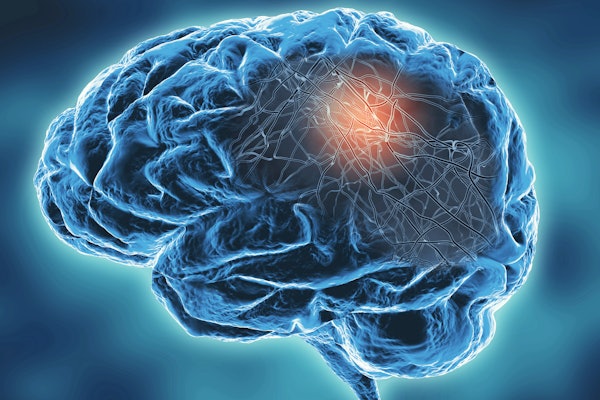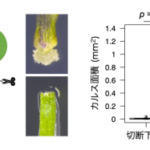記憶を呼び起こすと、記憶力が向上したことを示す電気信号が発生する。 Reactivating memories triggers electrical activity signifying improvement in storage
2022-10-24 ノースウェスタン大学
ノースウェスタン大学の神経科学者は、シカゴ大学てんかんセンターの臨床医と協力して、同センターの患者5人が、学習訓練の一環として研究チームが投与した音に反応したときの脳の電気活動を調査した。
研究に参加することを志願した5人の患者さんは、発作性疾患の潜在的な治療法を調査する目的で、脳に電極プローブを埋め込まれている。
この研究では、参加者が翌朝の回想法テストの成績を大幅に向上させたことがわかった。また、脳活動のマッピングにより、一晩の記憶の保存に関与する脳の領域を視覚的に特定することができ、記憶の保存の仕組みの理解に向けて大きな一歩を踏み出すことができた。
ある晩、患者が病室で眠っている間に、研究チームは10〜20の音を繰り返し提示し、電気生理学的な反応を記録した。すべての音は、覚醒を避けるために非常に静かに再生された。音の半分は、ラップトップコンピュータを用いて睡眠前に学習した物体とその正確な空間位置に関連するもので、例えば、車の鍵のジャラジャラという音は、その位置を思い出すのに役立つものだった。
睡眠後、研究者らは、頭皮からの脳波記録を用いた先行研究の結果を再現し、空間想起に系統的な改善を見出した。また、ノートパソコンの画面上で、記憶した場所をより正確に示すことができた。
脳電極を埋め込んだ新しいデータから、睡眠中に提示された物体音によって、シータ、シグマ、ガンマといった脳波帯域の増加を含む振動活動が誘発されることが明らかになった。
睡眠中に提示された音は、海馬と隣接する大脳皮質内側側頭葉の電気生理学的活動の存在を示し、対応する空間記憶の再活性化と強化につながった。
ガンマ応答は、睡眠後に示される空間記憶の改善の度合いと一貫して関連していた。この電気生理学的証拠から、研究者らは、睡眠に基づく記憶の増強はこれらの脳領域で行われると結論づけた。
<関連情報>
- https://news.northwestern.edu/stories/2022/10/study-looks-inside-the-brain-during-sleep-to-show-how-memory-is-stored/
- https://www.pnas.org/doi/full/10.1073/pnas.2123430119
睡眠中に記憶が再活性化される際のヒトの脳における記憶定着の電気生理学的マーカー Electrophysiological markers of memory consolidation in the human brain when memories are reactivated during sleep
Jessica D. Creery, David J. Brang, Jason D. Arndt, Adrianna Bassard, Vernon L. Towle, James X. Tao, Shasha Wu, Sandra Rose, Peter C. Warnke, Naoum P. Issa and Ken A. Paller
Proceedings of the National Academy of Sciences Published:October 24, 2022
DOI:https://doi.org/10.1073/pnas.2123430119

Significance
Sleep contributes to memory consolidation, we presume, because memories are replayed during sleep. Understanding this aspect of consolidation can help with optimizing normal learning in many contexts and with treating memory disorders and other diseases. Here, we systematically manipulated sleep-based processing using targeted memory reactivation; brief sounds coupled with presleep learning were quietly presented again during sleep, producing 1) recall improvements for specific spatial memories associated with those sounds and 2) physiological responses in the sleep electroencephalogram. Neural activity in the hippocampus and adjacent medial temporal cortex was thus found in association with memory consolidation during sleep. These findings advance understanding of consolidation by linking beneficial memory changes during sleep to both memory reactivation and specific patterns of brain activity.
Abstract
Human accomplishments depend on learning, and effective learning depends on consolidation. Consolidation is the process whereby new memories are gradually stored in an enduring way in the brain so that they can be available when needed. For factual or event knowledge, consolidation is thought to progress during sleep as well as during waking states and to be mediated by interactions between hippocampal and neocortical networks. However, consolidation is difficult to observe directly but rather is inferred through behavioral observations. Here, we investigated overnight memory change by measuring electrical activity in and near the hippocampus. Electroencephalographic (EEG) recordings were made in five patients from electrodes implanted to determine whether a surgical treatment could relieve their seizure disorders. One night, while each patient slept in a hospital monitoring room, we recorded electrophysiological responses to 10 to 20 specific sounds that were presented very quietly, to avoid arousal. Half of the sounds had been associated with objects and their precise spatial locations that patients learned before sleep. After sleep, we found systematic improvements in spatial recall, replicating prior results. We assume that when the sounds were presented during sleep, they reactivated and strengthened corresponding spatial memories. Notably, the sounds also elicited oscillatory intracranial EEG activity, including increases in theta, sigma, and gamma EEG bands. Gamma responses, in particular, were consistently associated with the degree of improvement in spatial memory exhibited after sleep. We thus conclude that this electrophysiological activity in the hippocampus and adjacent medial temporal cortex reflects sleep-based enhancement of memory storage.


